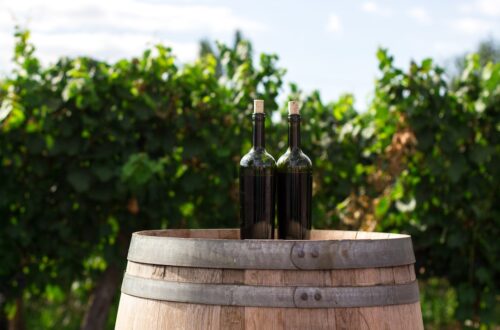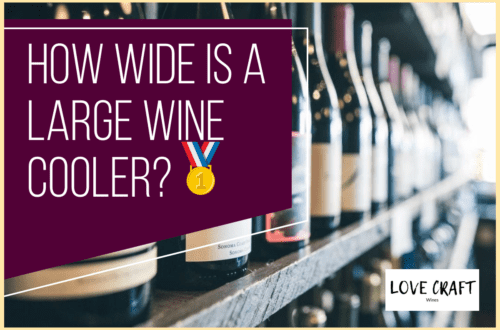If you’re a wine lover, then you know that proper storage is crucial for preserving the taste and quality of your favorite bottle. The way you store your wine can make all the difference between a smooth and flavorful sip or a bitter disappointment.
Understanding the factors that affect wine storage can help you ensure that your collection remains in excellent condition for years to come. One of the most important factors in wine storage is temperature. Keeping your wine at the right temperature is crucial for ensuring that it ages properly and retains its flavor. If your wine is stored at too high a temperature, it can spoil quickly, while storing it at too low a temperature can slow down the aging process and negatively affect the taste.
In addition to temperature, there are other considerations to keep in mind, such as humidity, light, and vibration. By taking all these factors into account, you can store your wine like a pro and enjoy it at its best.
Table of Contents
Understanding Wine Storage Factors
Understanding how to properly store your wine involves considering various factors such as temperature, humidity, and light exposure. Wine storage techniques can have a significant impact on the quality and longevity of wine.
Temperature is perhaps the most critical factor in wine storage, as it affects the rate of chemical reactions that occur within the bottle. When wine is stored at too high a temperature, the heat can cause it to age prematurely, leading to a loss of flavor and aroma. Conversely, storing wine at too low a temperature can slow down the aging process, potentially stunting the development of complex flavors that make wine so enjoyable.
Additionally, fluctuations in temperature can be equally harmful to wine, causing the cork to expand and contract, which can allow air into the bottle and spoil the wine.
In the next section, we’ll explore the ideal temperature range for wine storage and how to maintain it.
Temperature: The Key to Wine Storage
Keeping wine in a consistently cool environment is like giving it a cozy blanket to snuggle up in, ensuring it stays fresh and delicious for years to come. This is why temperature is the most critical factor to consider when storing wine.
Ideally, you want your wine to be stored between 45-65°F (7-18°C) to maintain the wine’s flavor and aroma. This is why wine cellars and wine cabinets are popular choices for wine storage, as they provide a cool and consistent environment that keeps wine at its best.
It’s important to note that temperature fluctuations can be just as damaging to wine as storing it at the wrong temperature. For example, if wine is stored at 55°F (13°C) for months and then suddenly exposed to higher temperatures, the wine can be damaged. This is why it’s essential to choose a storage location that maintains a consistent temperature.
In the next section, we’ll look at additional considerations such as humidity and light that can impact the quality of your wine.
Humidity and Light: Additional Considerations
Maintaining the perfect temperature for your wine is just the beginning; humidity and light are additional factors to consider when preserving the quality of your favorite bottle.
Humidity levels should be kept between 50-70% to ensure the cork stays moist and doesn’t dry out, which could lead to air seeping into the bottle and ruining the wine. The ideal environment for storing wine is in a wine cellar, where humidity levels can be closely monitored and controlled.
Light can also have a negative impact on wine. Exposure to ultraviolet rays can cause wine to age prematurely and lose its flavor. It’s best to store wine in a dark place or in a wine fridge with a solid door that blocks out all light. If you don’t have a wine fridge, avoid storing wine in direct sunlight or under bright artificial lights.
By keeping an eye on humidity and light levels, you can protect your wine investment and ensure that every bottle you open is of the highest quality.
Moving on to the next section, let’s talk about the impact of vibration on wine.
Vibration: The Silent Killer of Wine
Did you know that vibration can silently destroy the quality of your wine? It’s true, and it’s something that many wine enthusiasts overlook when deciding how to store their collection.
Vibrations can cause the sediment in your wine to be disturbed, which can lead to oxidation and spoilage. This is especially true for wines that are being stored for long periods of time, which is why it’s important to consider this factor when choosing a storage solution such as a wine cellar or wine cooler.
To help you understand the impact of vibration on your wine, here are three things to keep in mind:
-
Reduce vibrations by placing your wine bottles on sturdy shelves or racks that are well supported.
-
Avoid storing your wine near anything that vibrates, such as a washing machine or dryer.
-
If you’re storing your wine in a wine cooler, choose a unit that has a vibration-dampening system built in.
By taking these steps, you can help ensure that your wine collection remains in top condition for years to come.
In the next section, we’ll explore some additional tips for storing wine like a pro.
Tips for Storing Wine Like a Pro
You can take your wine storage to the next level by following these simple tips that’ll help you savor every sip of your favorite vintage.
First, consider investing in a wine rack that suits your needs. There are many wine rack options available, from a simple countertop rack to a custom-built cellar. Make sure to choose a rack that allows for proper air circulation and keeps the bottles in a horizontal position to ensure the cork stays moist and prevents air from entering the bottle.
Another important tip is to pay attention to the placement of the cork. The cork should always be facing downwards to prevent it from drying out. This’ll also help to keep any sediment in the bottle settled at the bottom, making it easier to pour without disturbing the wine. Proper cork placement will also prevent any air from entering the bottle, which can cause the wine to spoil.
By following these tips, you can store your wine like a pro and ensure that every bottle is enjoyed to its fullest potential.
Frequently Asked Questions
Can I store wine in the refrigerator?
Storing wine in the refrigerator is a common practice, but it may not be the best option for long-term storage.
Temperature control is crucial for preserving the quality of wine, and refrigerators are designed to keep food cool, not to maintain a consistent wine storage temperature.
Alternative options for wine storage include a wine fridge or a wine cellar, both of which are specifically designed for maintaining the ideal temperature and humidity levels needed for storing wine.
If you want to enjoy your wine at its best, it’s worth investing in proper storage equipment and avoiding the pitfalls of using your refrigerator as a wine storage solution.
Is it necessary to store wine horizontally?
When it comes to storing wine, you may have heard that it’s necessary to do so horizontally. But why?
Imagine holding a bottle of wine upright for an extended period of time. The sediment would settle at the bottom, causing the flavor to become unbalanced. Storing wine horizontally allows the sediment to spread out, ensuring a more even flavor profile.
Additionally, horizontal storage helps to keep the cork moist, preventing it from drying out and allowing air to seep into the bottle.
While there are alternatives to horizontal storage, such as using a wine rack or cellar, it’s important to consider the benefits of storing wine horizontally to ensure the best possible taste and longevity.
How long can I store an opened bottle of wine?
When it comes to preserving an opened bottle of wine, there are a few methods you can try to extend its lifespan.
The first tip is to reseal the bottle with its original cork or a wine stopper. This will help prevent oxidation and keep the wine fresh for a few more days.
Another option is to transfer the wine to a smaller container, such as a half-bottle or a mason jar, to reduce the amount of air in contact with the wine.
You can also try using a vacuum pump to remove the air from the bottle before resealing it.
Lastly, storing the bottle in the refrigerator can slow down the oxidation process and keep the wine drinkable for a few extra days.
Keep in mind that these methods won’t make the wine last forever, but they can help you enjoy it for a little longer.
Does the type of wine bottle affect storage?
When it comes to wine storage, the type of bottle can have an impact on how well the wine ages.
Different wine bottle shapes can affect the amount of oxygen that comes into contact with the wine, which can change the flavors over time.
Bordeaux-style bottles, with straight sides and high shoulders, are often preferred for red wines because they limit the amount of oxygen exposure.
Meanwhile, Burgundy-style bottles, with sloping shoulders, are often used for white wines because they allow for more oxygen contact.
Wine bottle colors can also play a role in storage, as darker bottles can help protect against light exposure and prevent the wine from spoiling.
Ultimately, the type of bottle you choose will depend on the type of wine you are storing and your personal preferences.
Can I store wine in a garage or shed?
When it comes to storing wine, you might be tempted to use your garage or shed as an extra storage space. However, it’s important to note that these areas are not ideal for wine storage.
The temperature fluctuations and potential exposure to light can negatively affect the quality and taste of your wine. In order to properly store wine, it’s recommended to keep it in a cool, dark, and humid place, such as a wine cellar or a designated wine fridge.
Remember the old adage: "If you can’t store it right, don’t store it at all." So, if you’re serious about preserving the quality of your wine collection, it’s best to invest in proper storage solutions.
Conclusion
Congratulations! You now know how to store wine like a pro. By understanding the importance of temperature, humidity, light, and vibration, you can ensure that your wine stays in optimal condition for years to come.
But let’s be honest, who has the time, space, or money to create the perfect wine storage environment?
You can spend hundreds of dollars on a wine fridge, meticulously control the temperature and humidity, and store your bottles in a dark, vibration-free room, but at the end of the day, wine is meant to be enjoyed.
So go ahead, pop open that bottle of red you’ve been saving for a special occasion, and savor every sip. Cheers!





